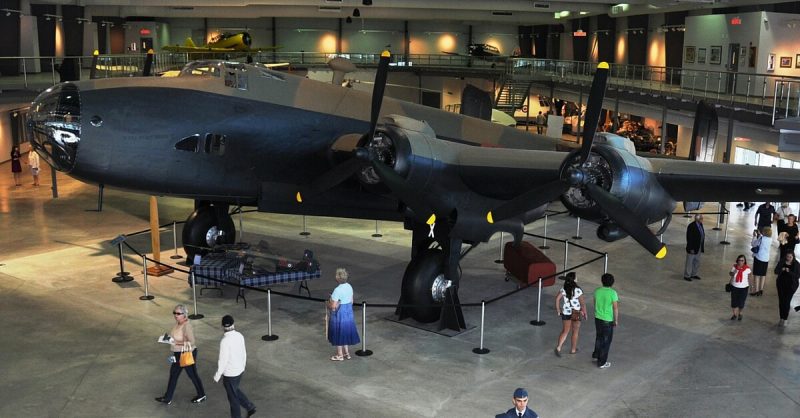The sight was mesmerizing, when in 2005, a crowd of some 1,400 veterans and World War enthusiasts witnessed the unveiling of the world’s very first fully restored Halifax. The story of this particular Halifax is one of courage and endurance and joins people from two continents together in a shared thread.
The year was 1945 when 17 years old Norwegian Tore Marsoe saw the legendary plane nose-diving in the lake Mjosa engulfed in fire and smoke. Marsoe was sitting now among the audience with high emotions, remembering the day of the crash. Marsoe said that image of the plunging aircraft stayed with him all through his adult life. He added that by being there to see the aircraft restored again gave him immense satisfaction and inner peace.
Out of all the Canadians who fought and died in the Second World War in Europe, more than 7000 flew Halifax bombers. Despite the fact this Handley Page Halifax MK VII NA337 had no Canadian crew on board the day it crashed in Lake Mjosa, it has a historic attachment with RCAF’s pilots who flew the Halifax during the Second World War which made this unveiling particularly significant.
Just a few weeks prior to the official ending of the Second World on April 23, 1945, Halifax 337 took off from RAF Station Tarrant Rushton, England. It was given the task to drop essential supplies to the Norwegian resistance fighting a guerrilla war against the occupying Nazis. After successfully dropping the supplies, Halifax 337 headed back home to England but the unlucky Halifax came under heavy fire of German flak guns. The rounds hit the aircraft destroying its engines and damaging the fuel tanks.The Pilot had to ditch the aircraft in Lake Mjosa, the impact was rough but all crew members survived the impact. However, all but one airmen died due to the exposure to the freezing water, rear gunner Flt. Sgt. Thomas Wightman survived by clinging on to an overturned dinghy. Help arrived for Sgt. Thomas more than six hours after their aircraft crashed in the lake but he survived the ordeal and is still living in England.
Tore Marsoe developed an obsession with the image of the crashing aircraft and could not let go the thought of its last moments and the fate of the people on board. Marsoe lived with this uneasy feeling for years but then he decided to take on the task and went looking for a sign of the aircraft in and around the Lake Mjosa. Sometime in 1980’s Marsoe and his friend Rolf Liberg found parts of the Halifax 337 wreckage two kilometers from the shore of Lake Mjosa.
When the news reached Canada, it caught the attention of a Canadian Airline Pilot Karl Kjarsgaard and Jeff Jeffery who was a Halifax pilot with a Distinguished Flying Cross. Both men devised a plan to collect the wreckage of the plane and try to rebuild it as a tribute to many Canadian pilots who flew the Halifax during the Second World War and died in combat. After collaborating with a number of volunteer organizations and institutions, in September 1995, both men managed to arrange the removal of Halifax 337 wreckage from the Lake, the Aviation reports.
With the efforts of some 100 volunteers investing 350,000 hours on the restoration, Halifax 337 was fully restored to all its grandeur and glory. The aircraft now stands fully intact as a symbol of resilience and pride for the Canadian people, and as a constant reminder of the sacrifices of thousands of young Canadians who died fighting fascism and Nazism in Europe away from home and family.
